In this clinical case, the Vittra APS composite resin, together with veneers, transformed the patient’s smile.
Authors: Prof. Dr. Shizuma Shibata, Dr. Maria Eduarda Cardoso, and Dr. Mariana Parizato Santos
MALE PATIENT, 33 YEARS OLD
He was dissatisfied with the aesthetics of the anterosuperior teeth, perceiving them worn and sensitive.
Initial evaluation
Anamnesis and clinical examination of the patient were performed, with a diet rich in acidic foods, as well as signs of bruxism wear. Consequently, wear was observed on the incisal edges of the central and lateral incisors on the cusp tips of the canines, in addition to loss of dental structure on the vestibular face.
Based on the initial examinations and planning, it was decided to restore the teeth through direct composite resin veneers.
Treatment performed with composite resin
After the diagnosis of dental wear and the guidelines, the case planning began for the aesthetic restoration of teeth affected by wear (teeth 14 to 24). Photographs, molding, study models, and diagnostic wax-up were performed. The planning and diagnostic wax-up were presented in a second moment and the mockup test in the mouth with the PrimmaArt bisacrylic resin.
After the test and approval of the patient for the proposed shape and volume, the oral adequacy maneuvers were started to perform the restorations, such as prophylaxis and isolation of the operative field.
The composite resin veneers were performed incrementally, with a silicone palate guide made from the diagnostic wax-up. After absolute isolation of the operative field, the selective acid etching of the enamel with Condac 37 was conducted for 15 seconds, followed by rinsing and drying, then the application of the Ambar Universal APS adhesive system, evaporation of the solvent with light blasting of air and photoactivation.
The first resin layer was made with Vittra APS resin in Trans N color, with a palatal guide in addition silicone. Then, a thin and uniform layer of resin referring to the dentin layer was applied over the entire tooth to provide volume and uniformize the color of the dental substrate.
The Vittra APS resin, in DBL2 color, was used for this. In the incisal edge, a light space and anatomical design referring to the dentinal extensions in this layer were maintained. Between the prolongations and the inciso-palatal angle, it was filled with Vittra APS resin in Trans OPL color to obtain the opalescent effect on the resin veneer. Finally, a thin layer of resin was applied to the vestibular enamel with the Vittra APS resin in EBL2 color. In this layer, the final anatomical details of the restoration were taken care of.
After finishing the restorative steps, finishing and polishing with Diamond Pro abrasive sanding discs began sequentially, respecting the basic anatomy of the tooth, such as marginal ridges, development lobes, angles, and edges. The final polishing was performed with diamond rubbers, followed by applying the polishing paste Diamond Excel Ultrafine with felt disc.
Step by step
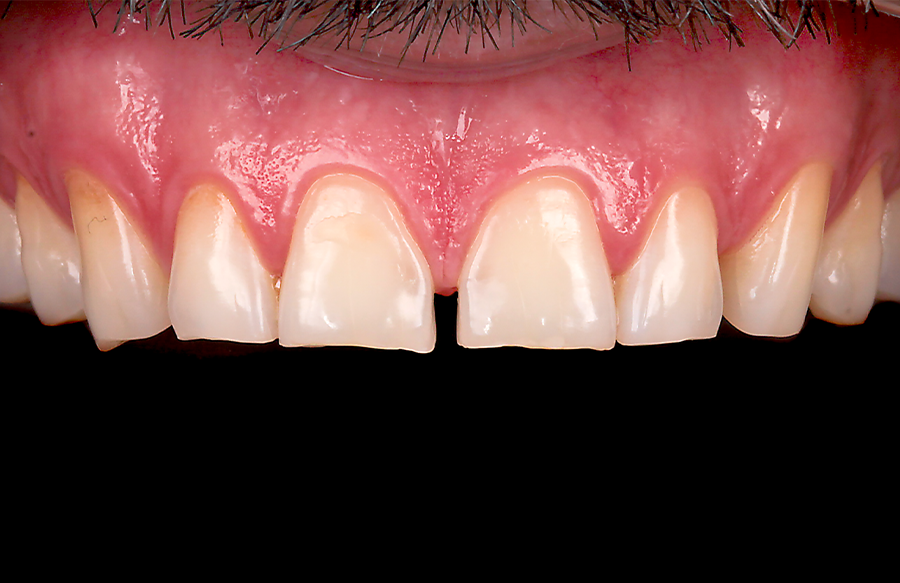
1 | The initial smile. It is possible to see a high degree of wear on the teeth and the presence of a diastema between the upper central incisors.
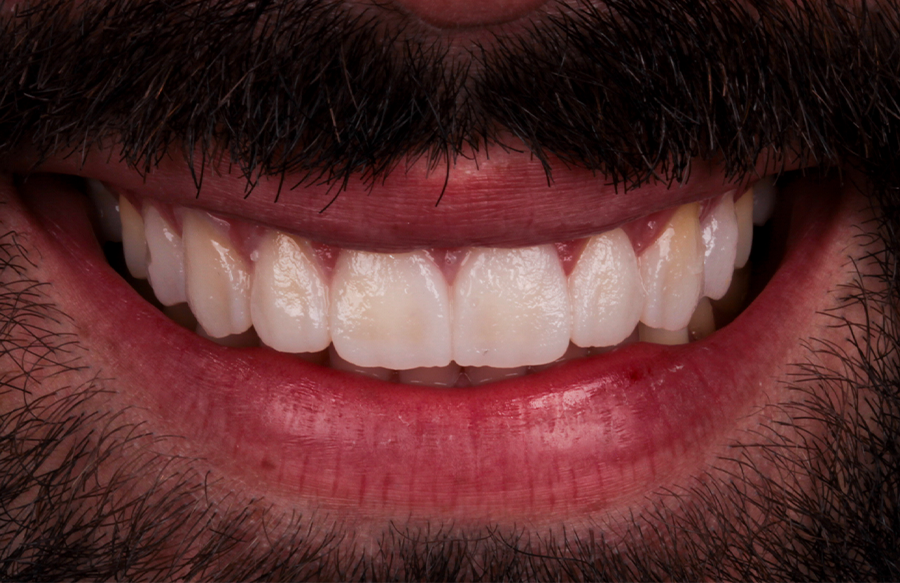
2 | Mockup test, in which the dental shapes and volume of this step were used as a reference for resin veneers.
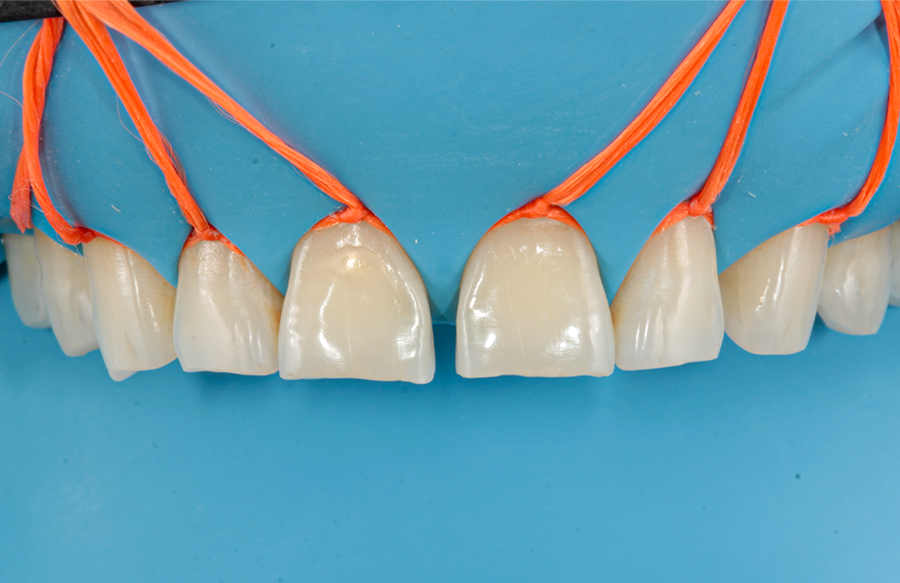
3 | Absolute isolation for greater moisture control and the possibility of a better-adapted restoration, especially in the mesial region of the central incisors.
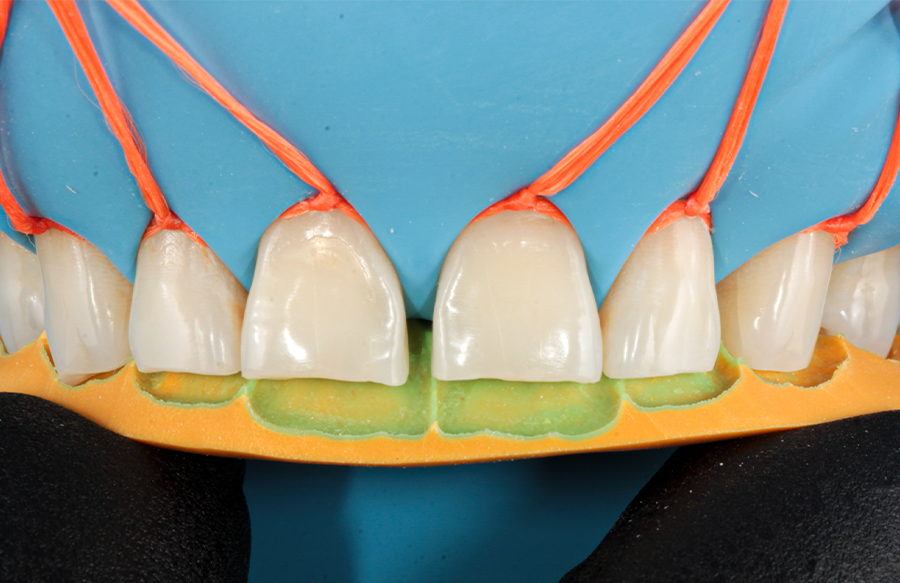
4 | Test of the guide in addition silicone, which served as a reference for making the palatal layer in resin.

5 | Dentin layer already positioned on the tooth, respecting a natural volume and the reproduction of the mamelons.
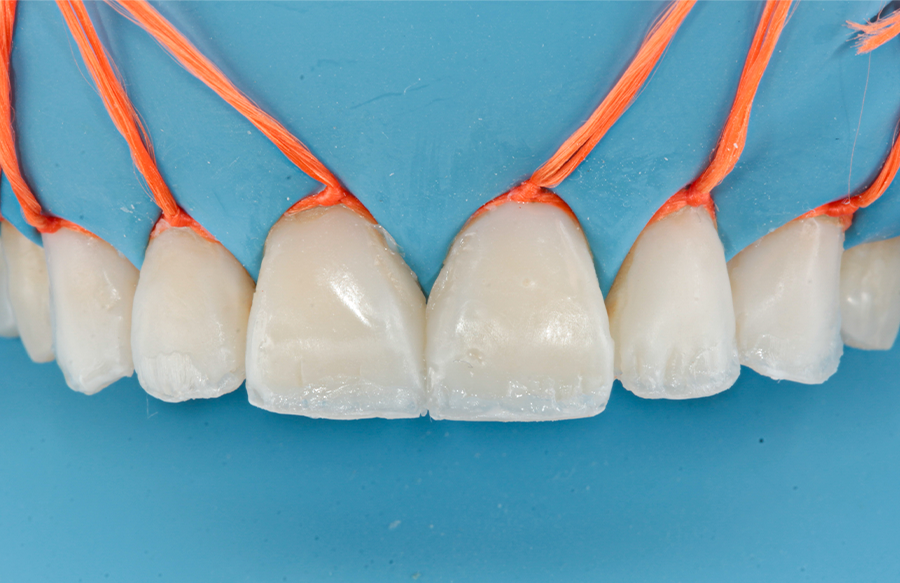
6 | Application of Vittra APS color Trans OPL resin for reproducing the opalescent halo in the restoration.

7 | Vittra APS composite resin layer referring to the vestibular enamel in EBL2 shade.
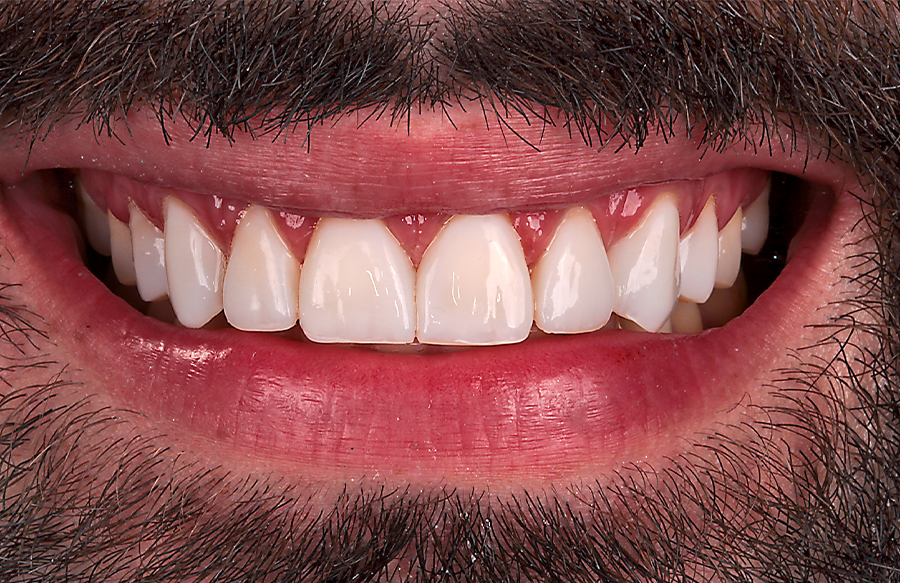
8 | Final smile.
Vittra APS Composite – Discover the beauty of zirconia with the strength of silicate




























